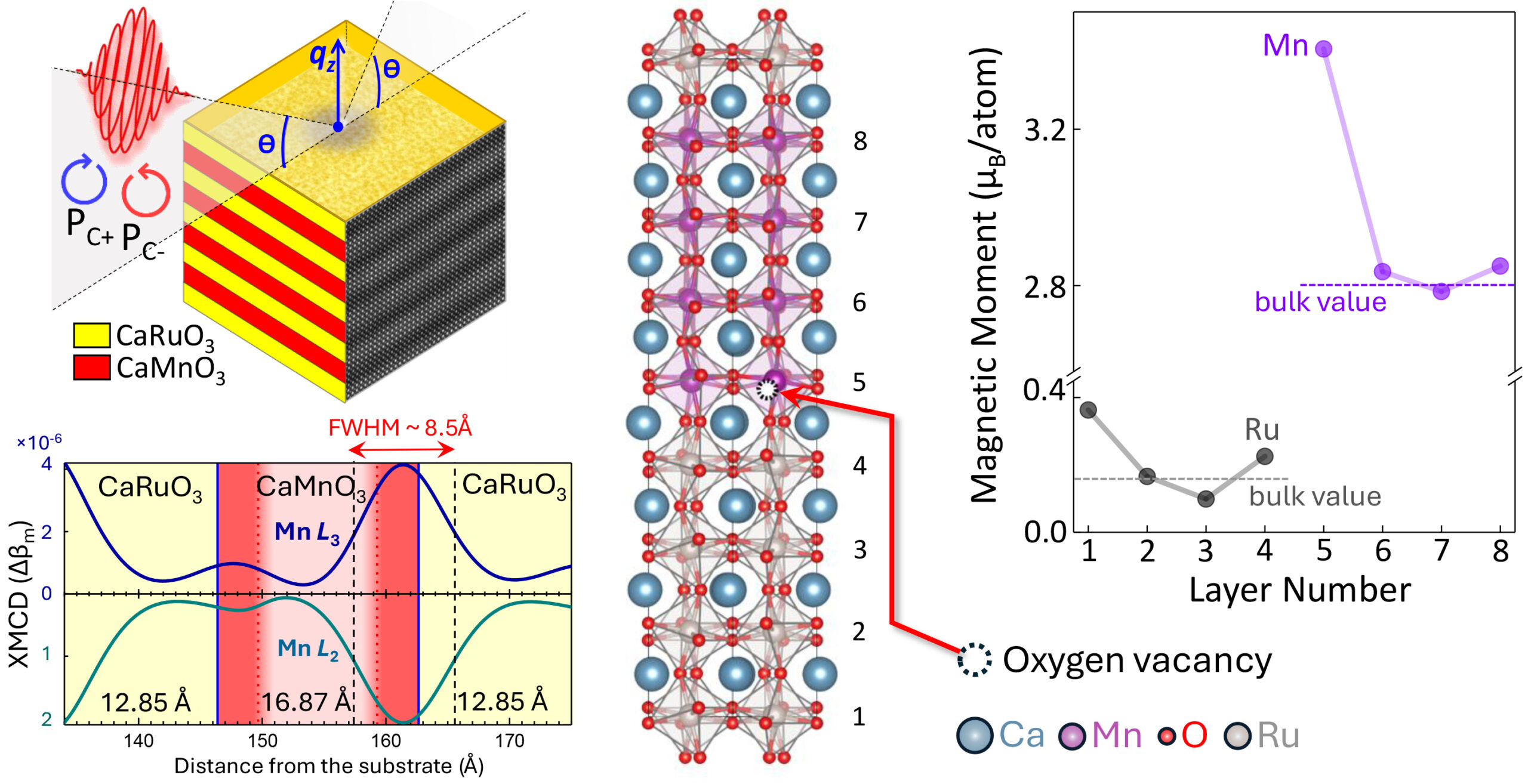Recently, a research team led by Alexander Gray from Temple University shed new light on interfacial ferromagnetism in superlattices—i.e., multilayer structures composed of thin antiferromagnetic and paramagnetic layers. Their findings offer detailed insights into the electronic and structural factors influencing atomic-level interactions at magnetic interfaces.
“Nanoscale control of interfacial magnetic phenomena is central to spintronic device innovation,” said Gray. “Experiments using polarized x-rays get us closer to that goal by allowing us to extract depth-resolved magnetic profiles from stacks of alternating magnetic layers.”
At Advanced Light Source (ALS) Beamline 4.0.2, the team probed superlattices of antiferromagnetic CaMnO₃ and paramagnetic CaRuO₃ using x-ray resonant magnetic reflectivity (XRMR) together with x-ray magnetic circular dichroism (XMCD). When these techniques are combined, they can provide sensitivity to magnetization direction, elemental composition, and (by varying the x-ray incidence angle) sample depth.
Graduate student Jay Paudel, who led the measurements and data analysis and is now a postdoctoral scholar at the ALS, along with ALS Beamline Scientist Christoph Klewe, discovered that interfacial ferromagnetism exhibits an asymmetric distribution and may extend beyond the interfacial layer, suggesting more complex interfacial behavior than previously recognized.
“These results challenge previous assumptions by demonstrating that interfacial magnetism can span multiple unit cells and that the alternating interfaces are not magnetically symmetric, as confirmed independently by both depth-resolved and depth-averaged x-ray resonant magnetic measurements,” said Paudel.
Density functional calculations from Nicola Spaldin’s group at ETH Zurich identified the driving force behind this phenomenon as a double-exchange mechanism facilitated by charge transfer from Ru to Mn across the interface. Furthermore, the calculations revealed that oxygen vacancies significantly influence the magnitude of interfacial magnetic moments, offering a potential method to manipulate interfacial ferromagnetism.
“We are seeing more and more that defects such as oxygen vacancies, which we used to think of as a nuisance, can actually be used as a design tool to engineer functionalities such as magnetism at interfaces,” said Spaldin. Samples for these experiments were grown using pulsed laser deposition by Jak Chakhalian’s group at Rutgers University.
The study enhances our understanding of interfacial magnetism, presenting practical strategies for controlling magnetic interfaces and fostering future innovations in magnetic storage and spintronic technologies.

J.R. Paudel, A.M. Tehrani, M. Terilli, M. Kareev, J. Grassi, R.K. Sah, L. Wu, V.N. Strocov, C. Klewe, P. Shafer, J. Chakhalian, N.A. Spaldin, and A.X. Gray, “Depth-Resolved Profile of the Interfacial Ferromagnetism in CaMnO3/CaRuO3 Superlattices,” Nano Lett. 24, 15195 (2024), doi:10.1021/acs.nanolett.4c02087.
This study was supported by the US Air Force Office of Scientific Research (AFOSR) under award number FA9550-23-1-0476.